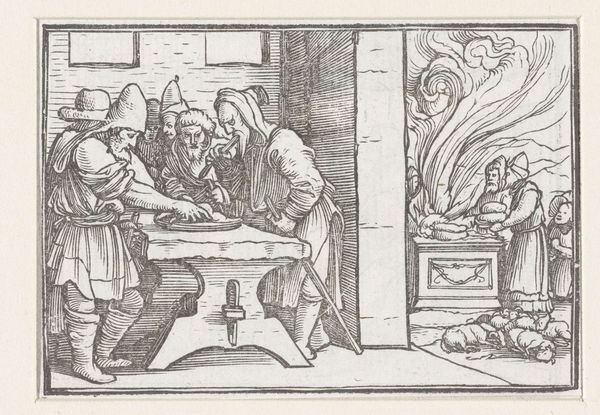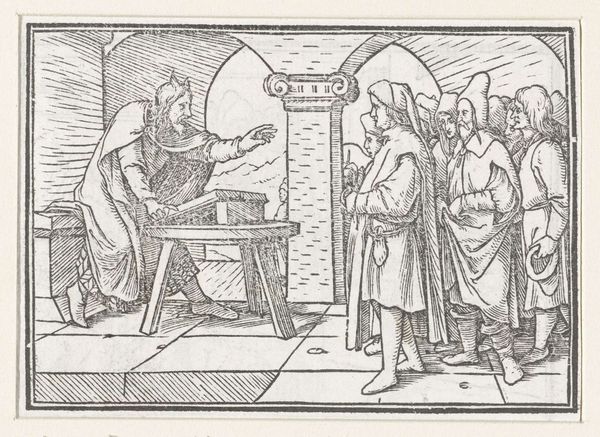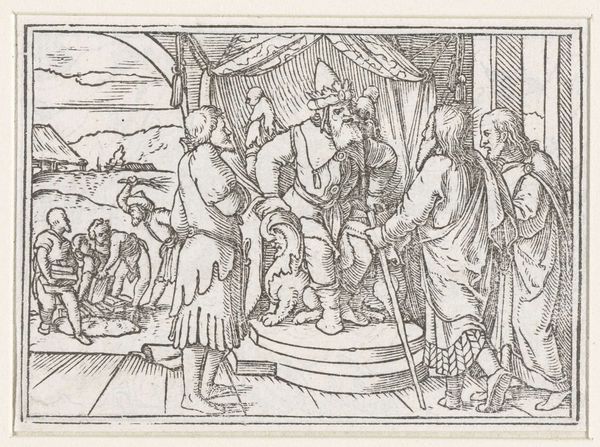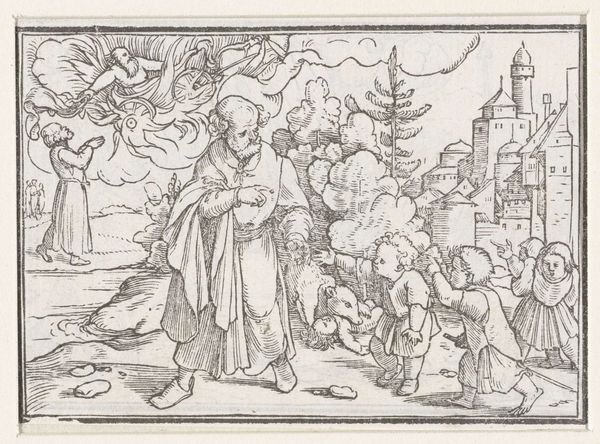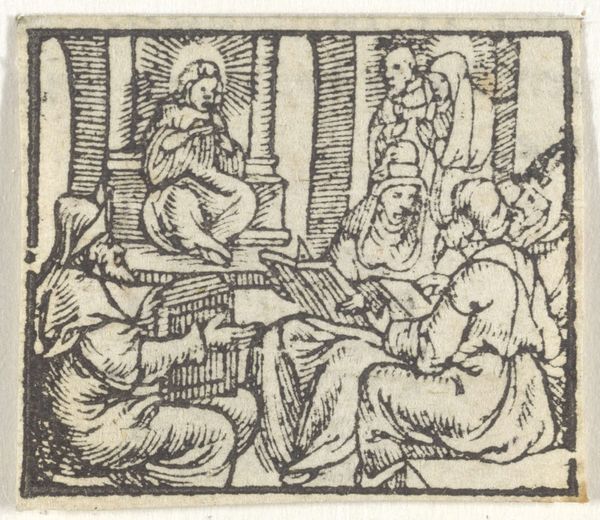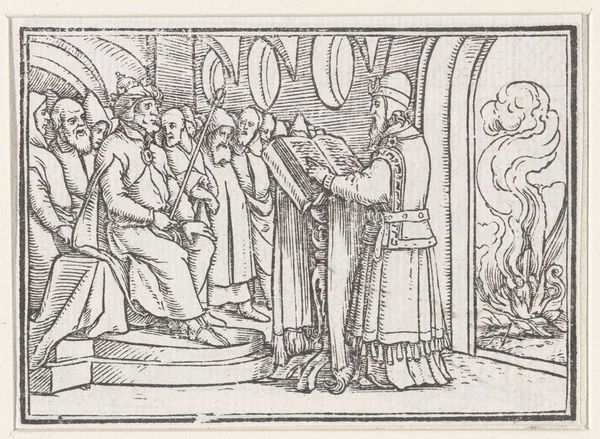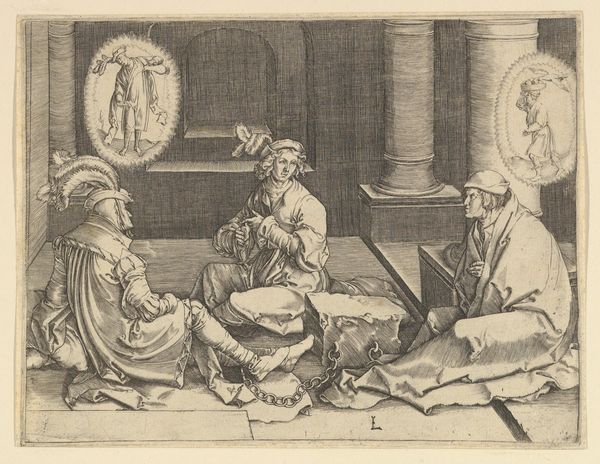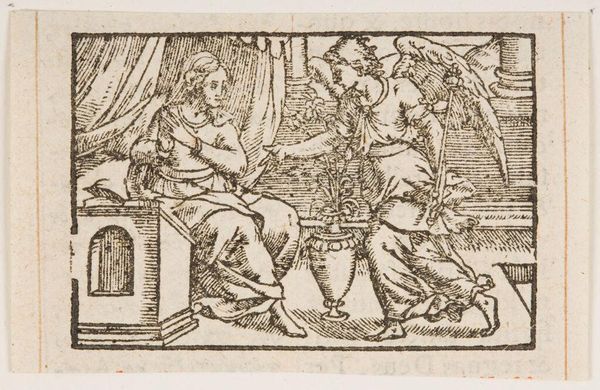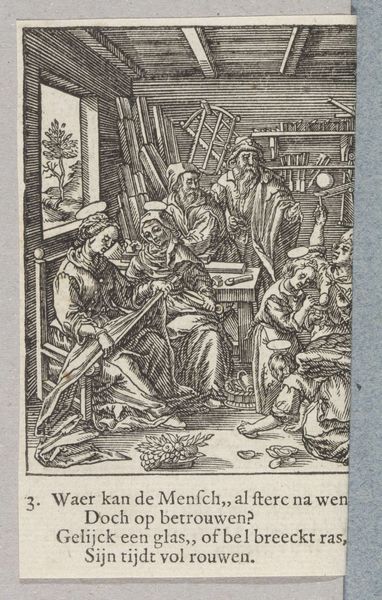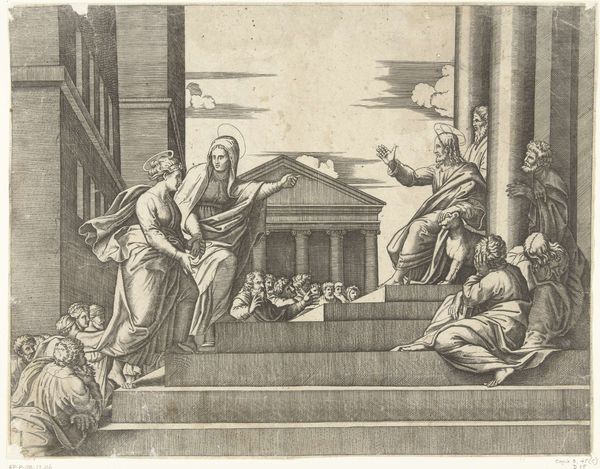
print, woodcut
# print
#
figuration
#
woodcut
#
line
#
history-painting
#
northern-renaissance
Dimensions: height 60 mm, width 85 mm, height 85 mm, width 97 mm
Copyright: Rijks Museum: Open Domain
Curator: This woodcut, dating from 1538, is titled "Nathan Pointing out David's Sins." It was created by Hans Holbein the Younger and is currently held at the Rijksmuseum. Editor: The starkness of the line work really stands out; it creates a heavy, somber mood. Curator: The work employs line art as its core component to create a contrast of space and shadow throughout, as is often the case in Northern Renaissance printmaking, which allowed for distribution of imagery far more effectively than painting at the time. Notice how the architecture frames the figures. The pillars not only provide depth, but also divide the composition into distinct planes of action. Editor: That's fascinating in that it mirrors the very divided nature of power and the prophetic position of Natan. David's sins of power are really being brought to bear by a critical prophet, and Holbein shows the contrast of access, who is privileged, and the reality that ethics demand reckoning even from the powerful. Curator: We see that division exemplified visually; Natan exists inside a colonnade, while we witness a landscape beyond—what feels like an implication of the everyday consequences to come outside of the royal court. Editor: That landscape feels so alive! Especially in juxtaposition to the figures that stand more heavily ornamented by lines that denote form over freedom of movement, which underscores the degree to which the ethics of power determine larger social dynamics, as shown with Natan holding David to account. Curator: It does give one a sense of a complex system of relationships and consequence. The materiality of the print medium amplifies its ability to broadcast ethical awareness of how power implicates daily life, from kings down to the shepherds. Editor: A really sharp composition serves a complex narrative here, bringing into awareness both the structure of royal courts, as well as what's at stake when they're not oriented toward the broader good of a landscape that must be cared for ethically. Thank you for this formal framing that sheds a really stark light. Curator: You're welcome; the semiotic qualities are difficult to unsee once one really sits with it.
Comments
No comments
Be the first to comment and join the conversation on the ultimate creative platform.
